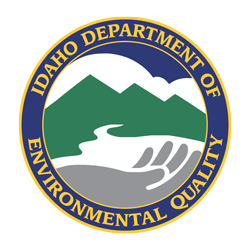Monitoring waivers are reductions in the repeat monitoring frequency for certain inorganic and organic chemical contaminants. Monitoring waivers are allowed by federal rules and each state has the option to allow them or not. Idaho adopted rules to allow monitoring waivers because of the low occurrence of contamination in public water systems and to help systems, particularly small systems, save money.
All community and noncommunity nontransient water systems that are current on their annual drinking water fee assessments may apply for monitoring waivers.
- Community water system: a public water system that serves at least 15 service connections used by year-round residents or regularly serves at least 25 year-round residents (e.g., municipal systems, subdivisions, and trailer parks).
- Noncommunity nontransient water system (NCNTWS): a public water system that regularly serves at least 25 of the same persons over 6 months of the year and is not regulated as a community water system (e.g., schools, factories, and churches).
To apply for monitoring waivers, you must fill out and submit an application form. Monitoring applications are based on federal requirements and are designed to determine levels of contamination and the vulnerability of the system to contamination. (Vulnerability information may be obtained from the Source Water Assessment Report for your system. Not having a Source Water Assessment does not affect your eligibility for waivers.)
Fill out the questions to the best of your ability and do not guess; write “unknown” for questions if you are unsure about the answer. Return the signed and completed application and agreement to your public health district or nearest DEQ regional office. Ensure any additional requested materials are included. Make copies for your records. Your application will be processed within 60 days of receipt unless you are notified otherwise.
Monitoring cycles are 9 years; monitoring periods are 3 years. Monitoring waivers may be effective for one, two, or three monitoring periods, depending on the contaminant, and must be renewed according to the table below.
Drinking Water Waiver Timetable
| Waiver | Renewal Time Frame* |
|---|---|
| IOCs** | 9 years for ground and surface water sources |
| VOCs GW | 6 years for ground water sources |
| VOCs SW | 3 years for surface water sources |
| SOCS | 3 years for ground and surface water sources |
| Asbestos | 9 years for ground and surface water sources |
| Cyanide | 9 years for ground and surface water sources |
| Dioxin | 3 years for ground and surface water sources |
* Unless otherwise notified
** Excluding nitrate, nitrite, sodium, and arsenic

